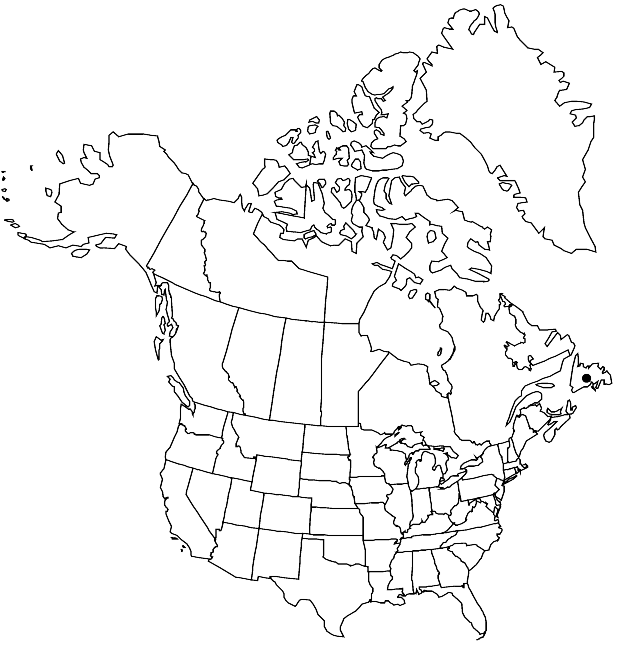Braya fernaldii
Rhodora 50: 12, plate 1090, fig. 2. 1948.
Plants scapose; moderately to densely pubescent, trichomes 2-forked and simple. Stems simple or few to several from base, erect, 0.2–0.7 (–10) dm. Basal leaves: blade narrowly spatulate to oblanceolate, (0.5–) 1–3 (–4) cm × 1–3 mm, base (membranous), broadly expanded near point of attachment, margins entire, (sparsely ciliate proximally), apex obtuse. Cauline leaves: 0 or 1 (or a leaflike bract subtending proximalmost pedicel). Fruiting pedicels erect or ascending, 1–2.6 mm. Flowers: sepals 2–2.6 × 1–1.5 mm; petals white or rose-purple, 2.4–3.8 (–4) × (0.8–) 1–1.3 (–2) mm, (claw and blade often gradually and not well-differentiated, apex rounded); filaments 1.7–2 mm; anthers oblong, 0.3–0.4 mm. Fruits lanceoloid-subulate, not torulose, (straight), (0.3–) 0.4–0.7 cm × (0.7–) 1–1.5 (–1.7) mm; valves densely to moderately pubescent, trichomes 2-forked and simple; septum margin broadly expanded basally (forming sacklike pouch around proximalmost seed in each locule); ovules 10–16 per ovary; style (0.5–) 0.6–1 (–1.2) mm; stigma 2-lobed or entire. Seeds uniseriate, oblong, (0.9–) 1–1.3 × (0.4–) 0.5–0.6 (–0.7) mm. 2n = 56.
Phenology: Flowering Jun–Jul.
Habitat: Limestone barrens
Elevation: 0-60 m
Distribution

Nfld. and Labr. (Nfld.)
Discussion
Of conservation concern.
Braya fernaldii and B. longii are closely related northwestern Newfoundland endemics that differ from the remaining species of Braya by their lanceoloid-subulate fruits and septum margins that broadly expand basally to produce a sacklike pouch around bases of proximalmost seeds in each locule.
Selected References
None.
Lower Taxa
"not" is not a number. "elongated" is not a number."thick" is not a number."dm" is not declared as a valid unit of measurement for this property."dm" is not declared as a valid unit of measurement for this property.